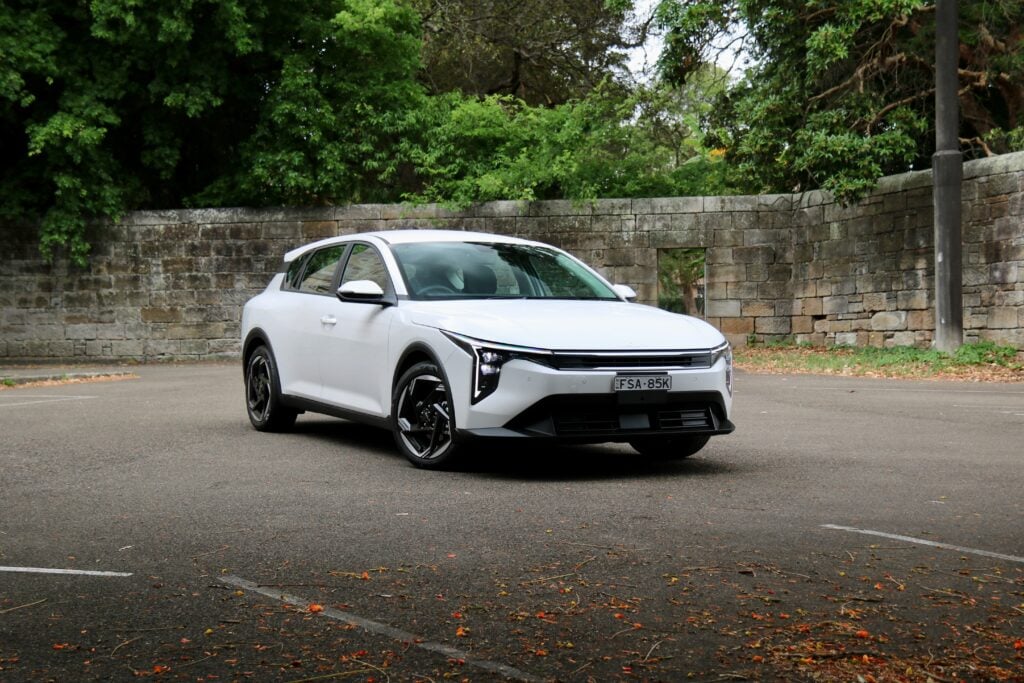Score breakdown
Things we like
- Good interior space for the footprint
- Lovely design inside and out
- Diesel punch
Not so much
- Heavy
- No hybrid version
- Not exactly cheap
Sometimes I start writing a review for a car where I type “this is the only car of its type in the market” and then within thirty seconds, I can think of three others. The Mazda CX-8 is just this kind of car and I can think of at least two others like it.
What I like about the CX-8 is that it isn’t a CX-9. I quite like the CX-9 except for the fact it’s massive. I once got into a whole heap of trouble during a radio spot where I said that most people who buy seven-seat SUVs don’t actually need them and the switchboard lit up with sensationally angry people who when pushed admitted they never used the third row. They got me back again but I’ve rarely said anything on air to have proved so controversial.
So the CX-8 is a seven-seater but it’s one that I regularly recommend to people who don’t actually need one. This might sound familiar to you if you’ve read a recent review or two of mine of that same kind of seven-seater, the VW Tiguan Allspace. The CX-8 has many similar qualities but is also quite, quite different.
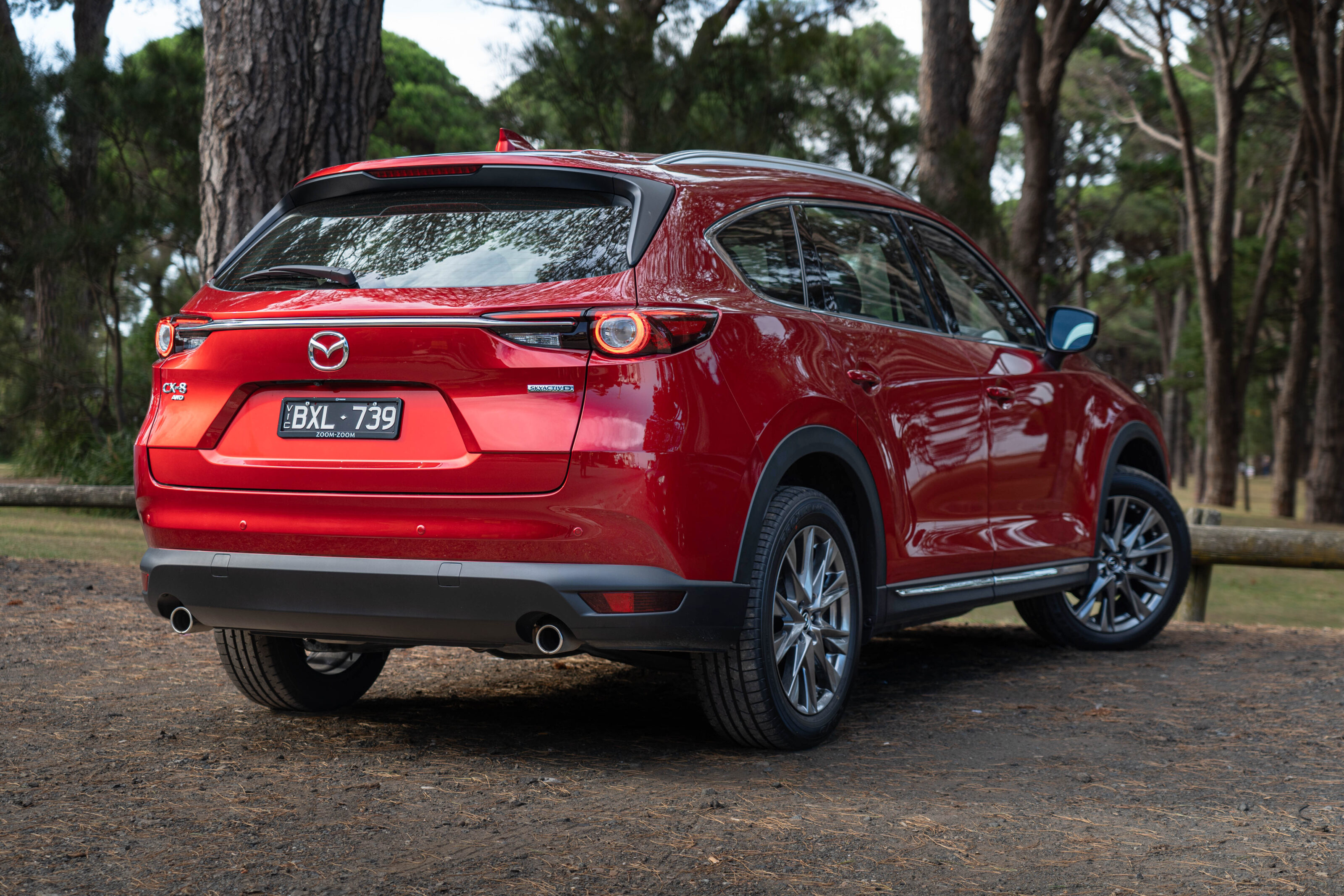
JUMP AHEAD
- How much is it, and what do you get?
- How do rivals compare on value?
- Interior comfort, space and storage
- What is it like to drive?
- How is it on fuel?
- How safe is it?
- Warranty and running costs
- VERDICT
- Specifications
How much is it, and what do you get?
Being a Mazda, the CX-8 comes in a dizzying array of specifications, with two engines, front- or all-wheel drive and four trim levels.
You can get into a CX-8 for $40,490 (petrol) or $47,490 (diesel) before on-road costs. The range then works its way up through Touring, Touring SP (basically a black pack on the Touring), GT, Asaki and finally the Asaki LE for a tick under seventy grand and only in diesel. That’s a pretty decent spread.
The car I had for nearly two weeks is an upper-mid specification GT diesel with all-wheel drive. At $63,890 before on-road costs, it’s seven thousand dollars more expensive than the front-wheel drive petrol. There are no petrol all-wheel-drive versions, which is intriguing given the CX-9 is turbo-petrol only and the CX-5 can be had with all-wheel drive in petrol, turbo-petrol and diesel.
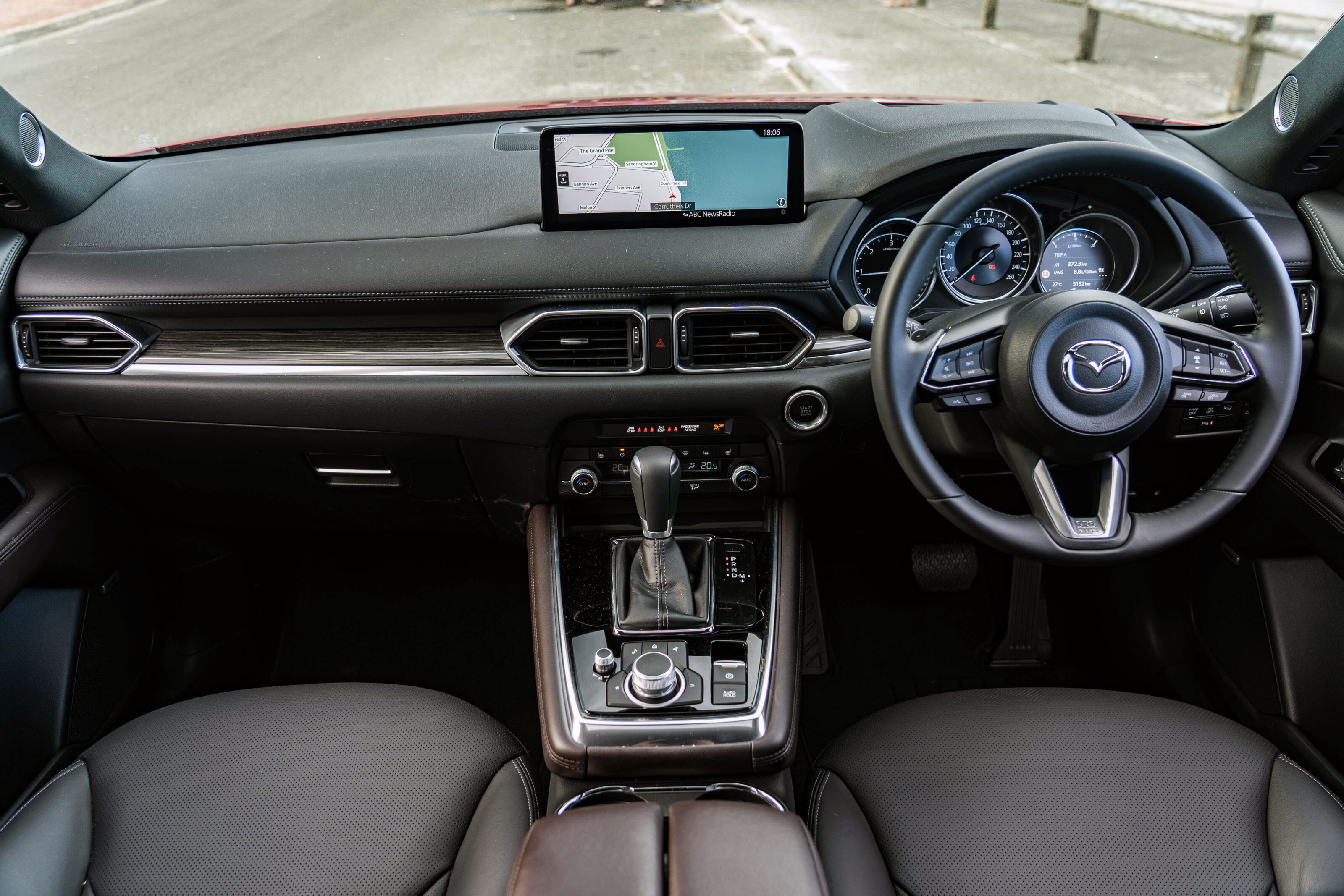
Anyway, for your money you get:
| 2022 Mazda CX-8 GT Diesel features | |
|---|---|
| 10-speaker stereo | Heated front seats |
| 19-inch alloy wheels | Keyless entry and start |
| Android Auto (USB) | Partial leather interior |
| Apple CarPlay (USB) | Power tailgate |
| Auto LED headlights with auto high beam | Power-adjustable front seats |
| Auto wipers | Reversing camera |
| DAB+ digital radio | Sattelitec navigation |
| Front and rear parking sensors | Space-saver spare |
| Head-up display | Three-zone climate control |
| Heated and folding rear vision mirrors | Wireless phone charging pad |
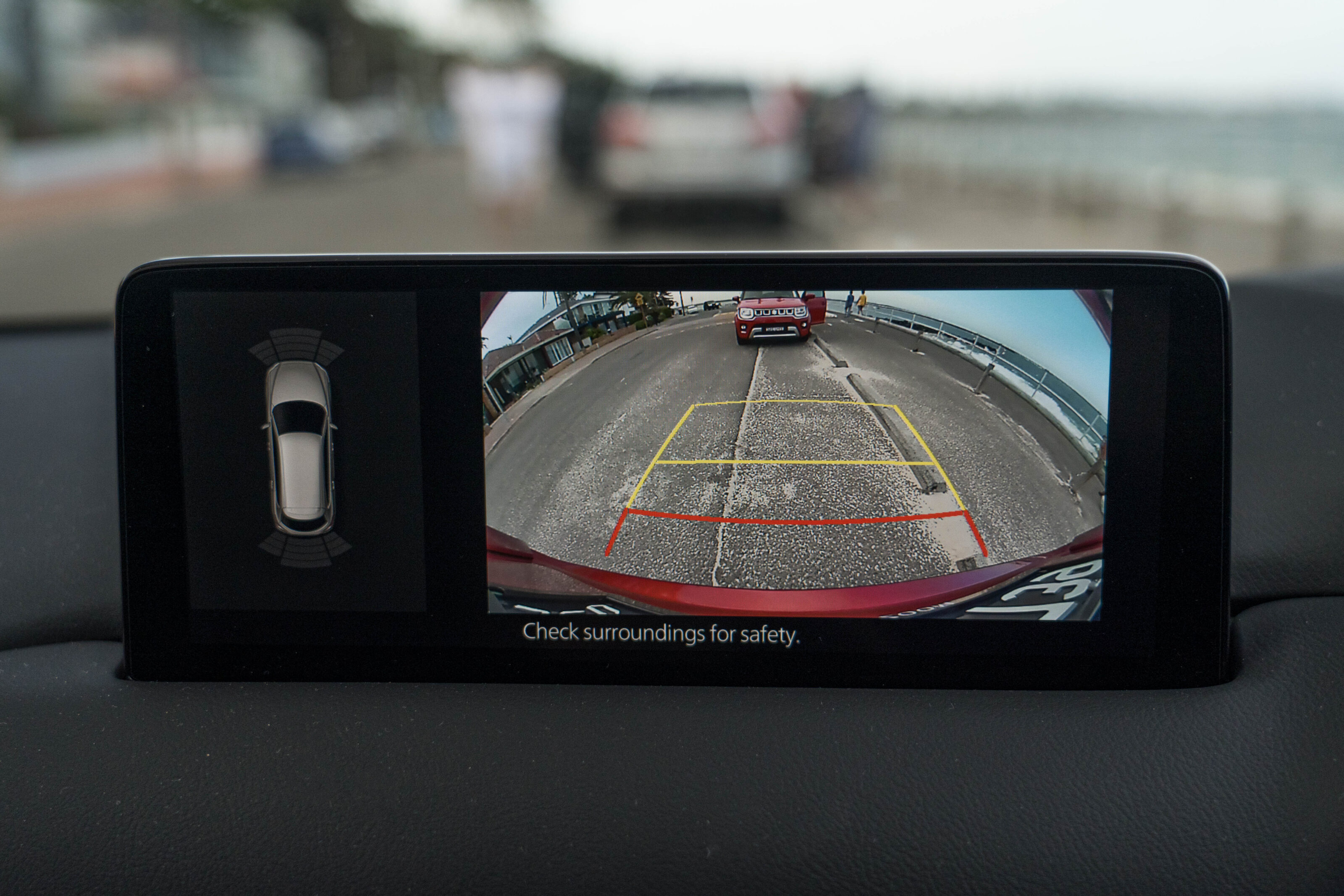
The CX-8 comes in eight colours, three of which are regarded as premium and worthy of an extra $795. The fact there are five freebies instead of one or two is unusual, although I will always say if you’re not getting a Mazda in Soul Red (CX-9 excepted), you’re doing it wrong.
Mazda offers no other factory options but a dealer will sell you lots of accessories if you so desire to tart things up a little.
Here in the GT, you get the newer version of Mazda’s media system, Mazda Connect, on the genuinely lovely 10.25-inch screen. Unlike the older one, the screen itself is not touch-enabled (you could only use its predecessor as a touchscreen when stationary) and is controlled by the rotary dial on the console. It works well for the Mazda software but takes a lot of getting used to in Apple CarPlay/Android Auto.
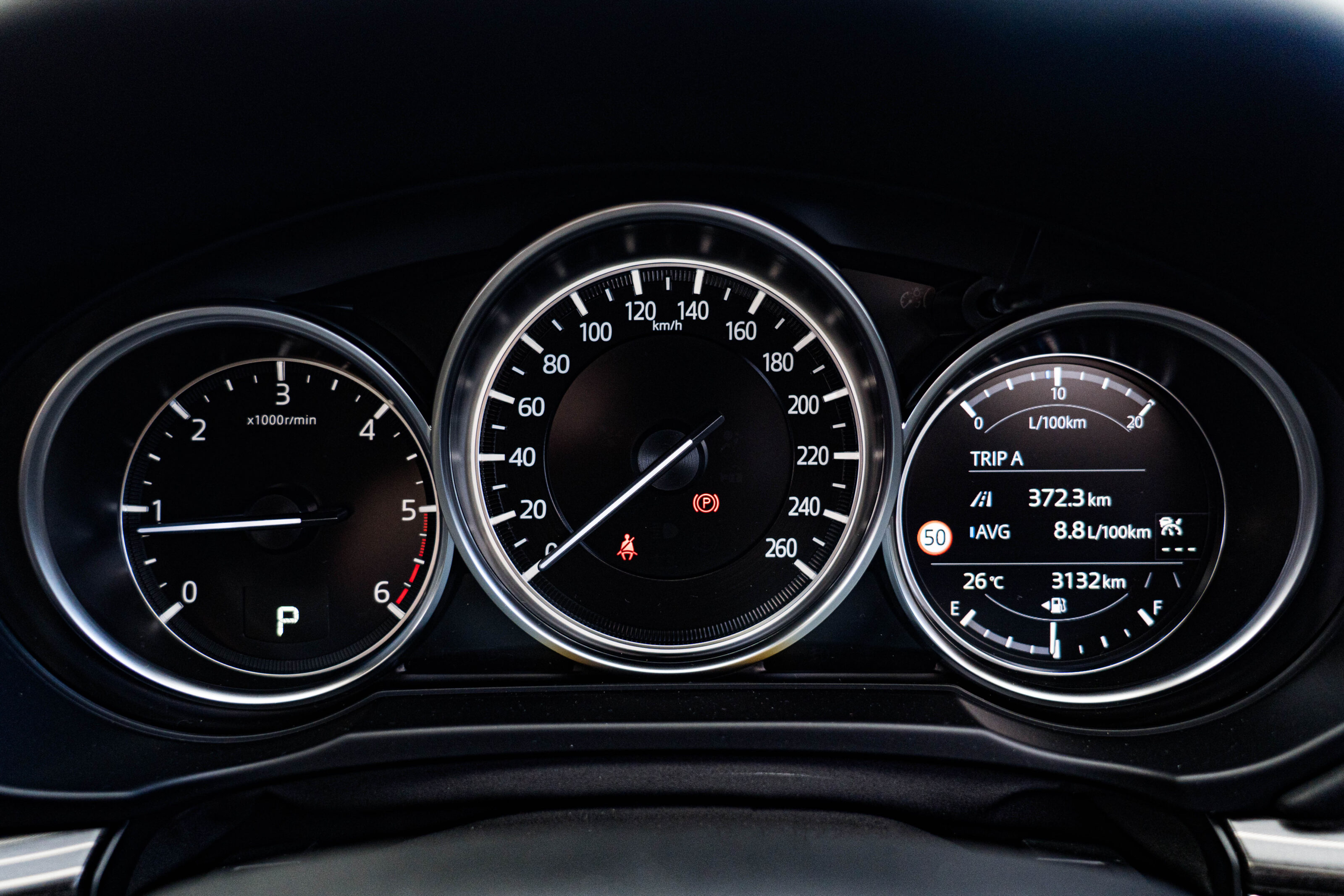
How do rivals compare on value?
The most obvious rival is the Volkswagen Tiguan Allspace. At the CX-8 GT’s price point, you can throw yourself at the mercy of the 162 TSI R-Line for $57,790 before on-road costs. As the TSI bit suggests, it’s a turbo-petrol engine but does have all-wheel drive and, of course, seven seats.
VW will charge you more to service the Allspace but you won’t have to service it as often as a CX-8 and it’s not long for this world, with a replacement expected next year.
It’s still a ripper of a car, though, if you can put up with a few of its well-documented quirks such as the oft-maligned media system and the capacitive steering wheel buttons.

The second obvious rival is the Mitsubishi Outlander. Strictly speaking – and by the company’s own admission – it’s a 5+2 rather than a seven-seater. It’s a 5+2 because there’s a lot of faffing about required to fit seven people in without causing anyone significant pain.
It is a much better car than the previous one, but not as polished as either the VW or the Mazda in the chassis and the 2.5-litre petrol with continuously variable transmission (CVT) is barely adequate. That said, for $55,590 before on-road costs you can bypass that dreary driveline and get smoother, quieter punchier and more efficient petrol-electric power with the mid-spec Aspire plug-in hybrid or $67,490 (excluding on-road costs) for the fully-loaded Exceed PHEV which has a terrific interior.
Outlanders have a long warranty at 10 years/150,000km and reasonably cheap servicing too.

Interior comfort, space and storage
Having tested a CX-9 not long before the CX-8, it was interesting to see how the interiors stacked up against each other. And really, the CX-8 is just a slightly shrink-wrapped version of the bigger bruiser.
You’ll notice it’s not as airy and voluminous but the payback is that it’s easier to park.
Boot space starts at an entirely reasonable 209 litres with all seven seats upright. That’s not bad going and it’s enough for a few bags of supermarket shopping. Add in the underfloor storage and there’s 249 litres, that extra volume good for muddy boots or wet towels. With the third row down you basically have a high-riding station wagon with 775 litres of space.
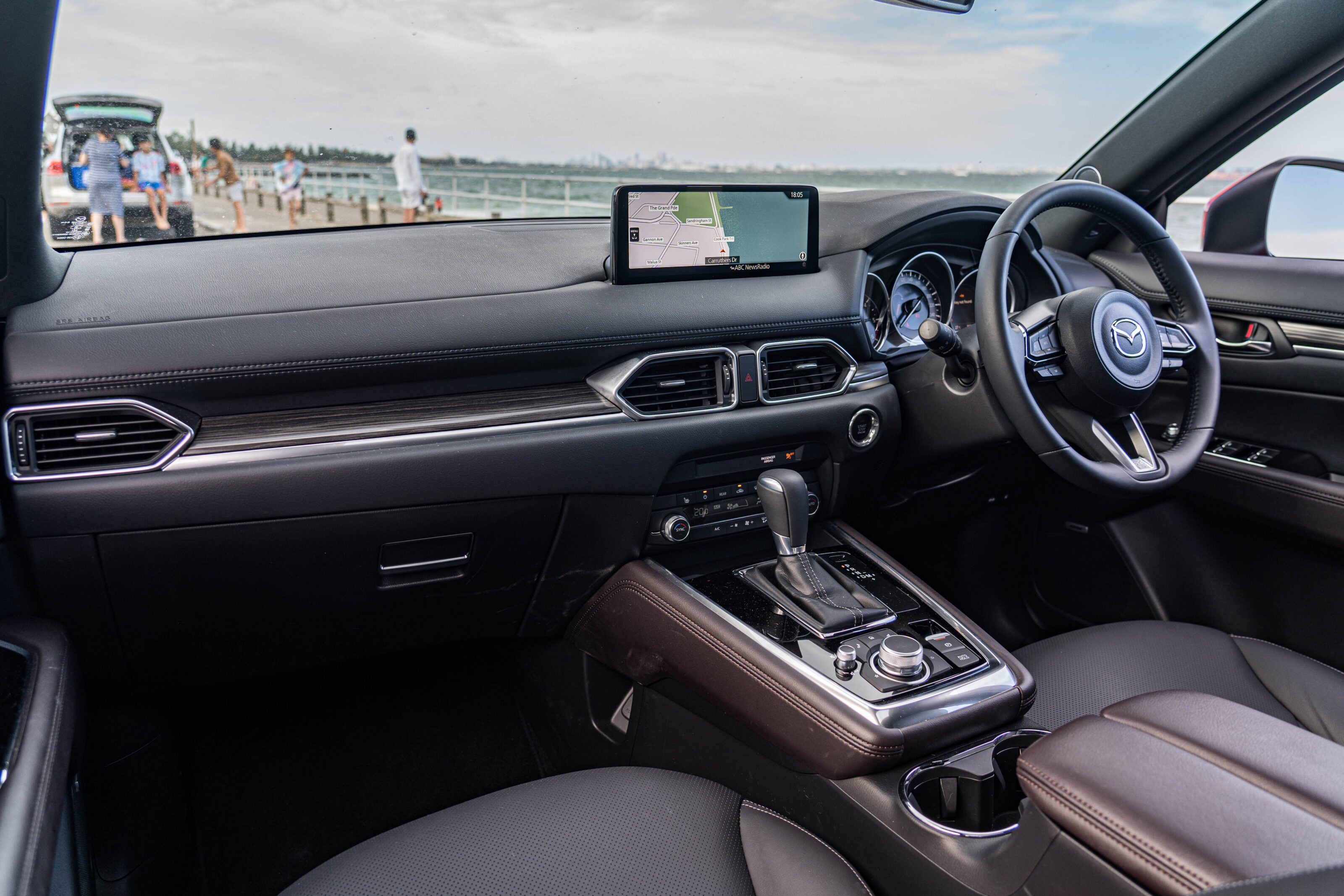
Mazda doesn’t offer a figure for all seats down, but it’s probably somewhere in the region of 2300 litres, which you can comfortably say is a lot.
Access to the third row of seats is quite straightforward. There’s a button on the outer base of the middle row seats that tips the backrest forward and the base slides out of the way.
Huge rear doors make access fairly easy and once in, a six-footer (180cm) like me can sit in reasonable comfort for a short trip. The seatback is quite upright and non-adjustable and my knees are in my face, but there are worse third rows in much bigger cars.
The second row is split 60:40, with the smaller portion on the kerb side so only one person has to move if you’re picking up people as you go. You get your own climate control zone and it pushes enough air to keep the vent-free third row reasonably cool on hot days and warm on cold ones.

A centre armrest features a pair of cup holders and two USB-A ports for device charging. There is plenty of head, shoulder and leg room for even taller folks as the seat does roll fore and aft. The middle seat is also acceptably comfortable but this isn’t a particularly wide car so three across isn’t a long-trip proposition.
Up front, you have two power-adjustable heated seats. Unfortunately, the seats themselves are a little dreary and are outclassed by the Outlander’s and Tiguan’s excellent front seats. They’re not bad, but they don’t look like much and the fake leather isn’t all that nice. The Touring SP gets nicer Alcantara-style panels which I’d carry through to the GT if I was in charge.
You get another two USB-A ports for charging and connectivity here, as well as two cup holders and a wireless phone charging pad.
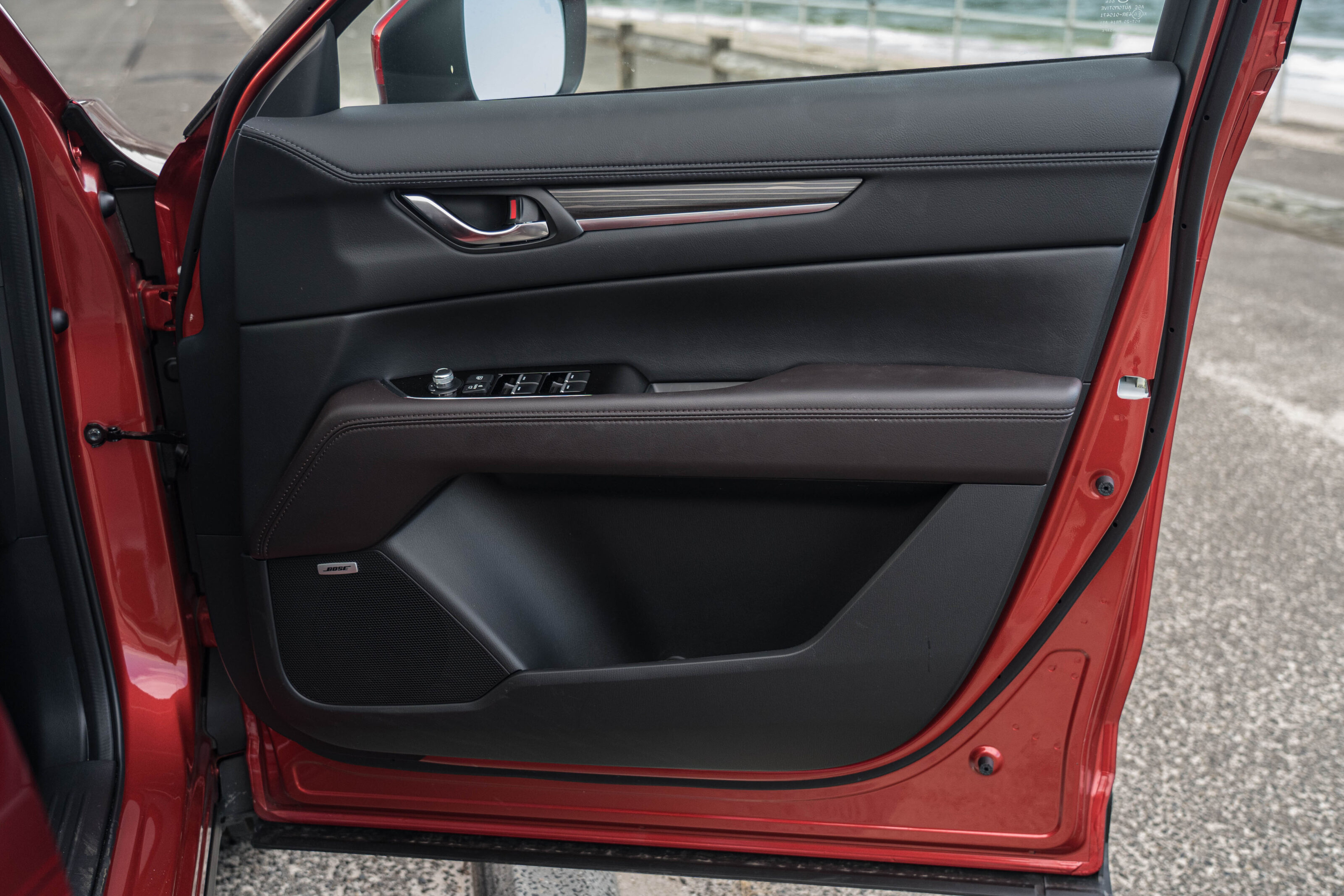
What is it like to drive?
Like the CX-5 on which it is based, the CX-8 is really nice to drive. Firm but compliant suspension, well-weighted steering and just enough feel in the helm to ensure you’re connected to the road.
You never really get away from the weight of this car, though, tipping the scales at just over two tonnes with a single person aboard. That’s a lot.
Which is why the diesel does make some sense. The 2.5-litre naturally-aspirated petrol is a nice enough engine but with 2000kg to haul (plus the rest), it’s not at its best, particularly as you can’t get the lovely turbo-petrol Mazda has in its armaments cupboard.
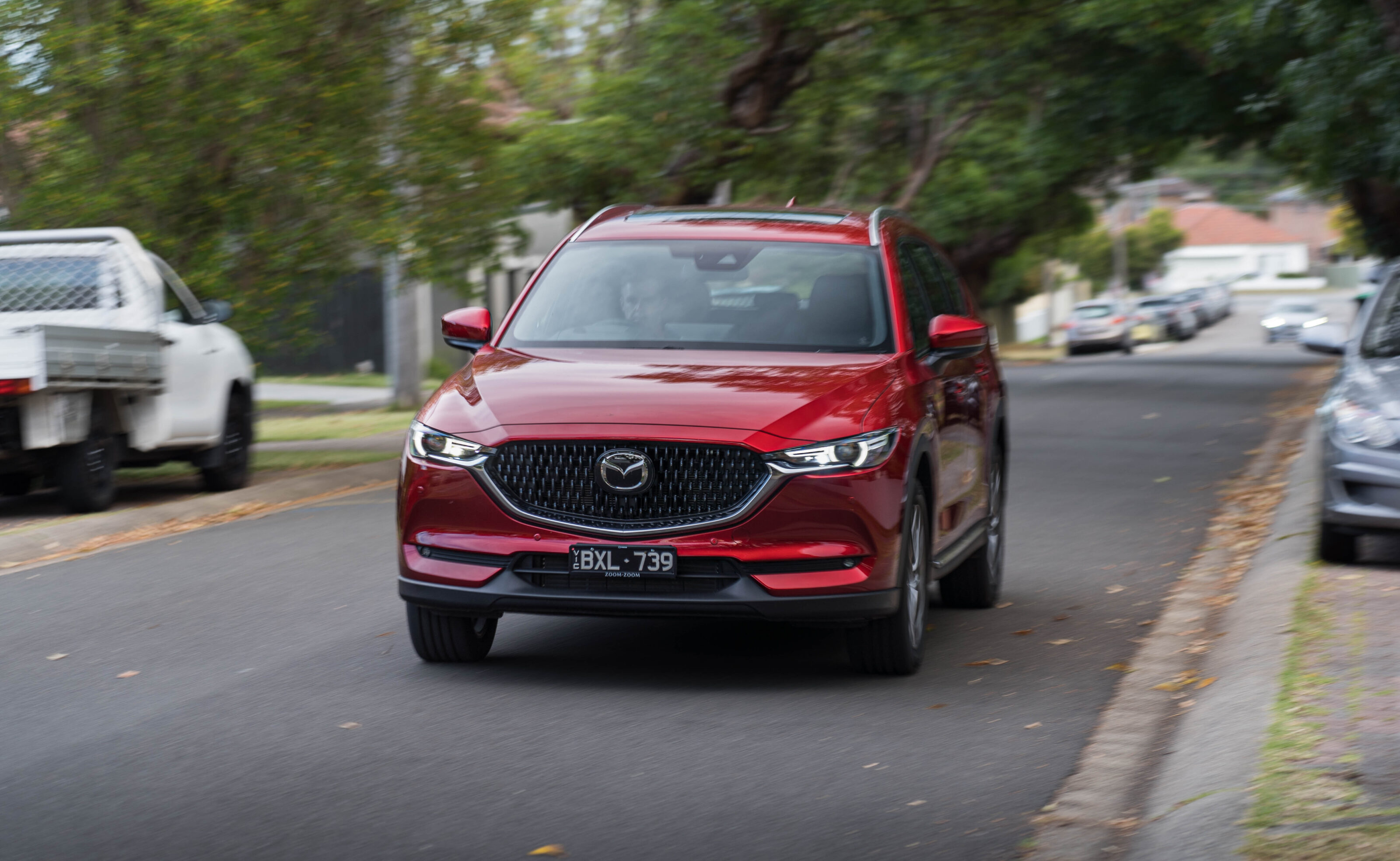
| 2022 Mazda CX-8 GT Diesel drivetrain | |
|---|---|
| Engine | 2.2-litre four-cylinder turbo-diesel |
| Transmission | 6-speed automatic |
| Power | 140kW @ 4500rpm |
| Torque | 450Nm @ 2000rpm |
| Drive | all-wheel |
The 140kW 2.2-litre turbo-diesel is torquey and smooth, hooked up to a six-speed automatic. It’s happy to rev too, as evidenced by the 4500rpm arrival of maximum power, but it’s the early entry of all 450Nm that really makes this engine.
Smooth off the lights, it builds speed without any fuss and more than keeps up with the cut and thrust of suburbia.
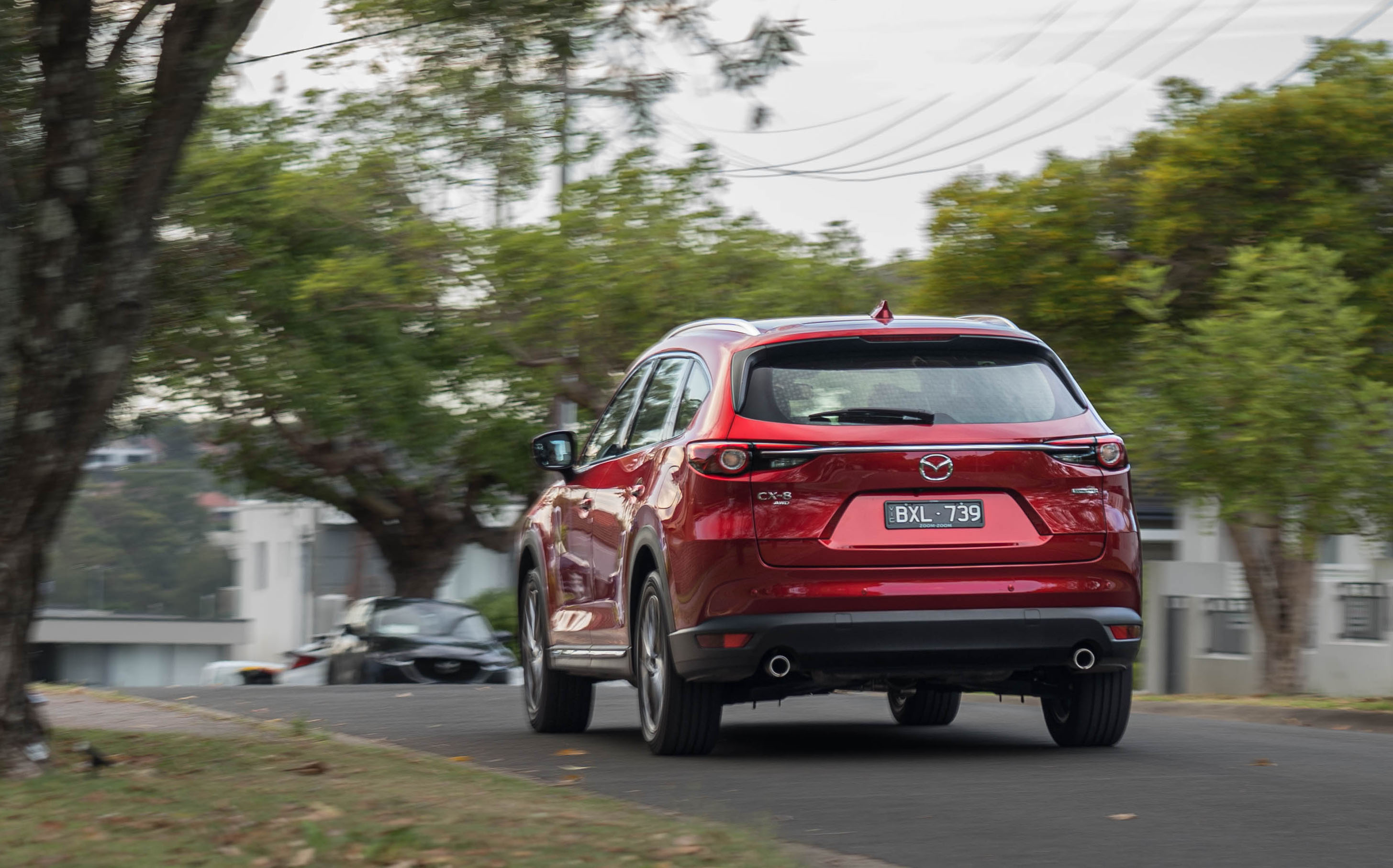
In the gears it’s unexpectedly quick, so handles a load of passengers and cargo without feeling like you’re dragging a block of concrete behind you.
On the highway, it settles into a quiet cruise with just a little wind and tyre noise and a distant whirr from the engine bay. It’s a great cruiser, with fairly comfortable front seats and a low-stress approach to interior design.
It’s also easy enough to park, although 4.9 metres is getting on for length. The various sensors and cameras make it less nerve-wracking but being narrower than its larger sibling makes a huge difference.

How is it on fuel?
During our time with the CX-8, we covered 422km at 9.0L/100km, which is a fair bit higher than the official figure. It was mostly consigned to running around the suburbs and my right foot was very fond of ensuring the turbo was spinning to keep the torque flowing.
| 2022 Mazda CX-8 GT Diesel fuel consumption | |
|---|---|
| Fuel consumption (ADR combined) | 6.0L/100km |
| Fuel consumption (tested) | 9.0L/100km |
| Fuel capacity | 74 litres |
| Fuel type | diesel |
The unexpectedly large tank means that you should theoretically be able to cover over a thousand kilometres of highway cruising on a single fill, which might float your boat. The petrol wouldn’t be far behind, however, so it’s worth investigating if all-wheel drive isn’t an absolute requirement.
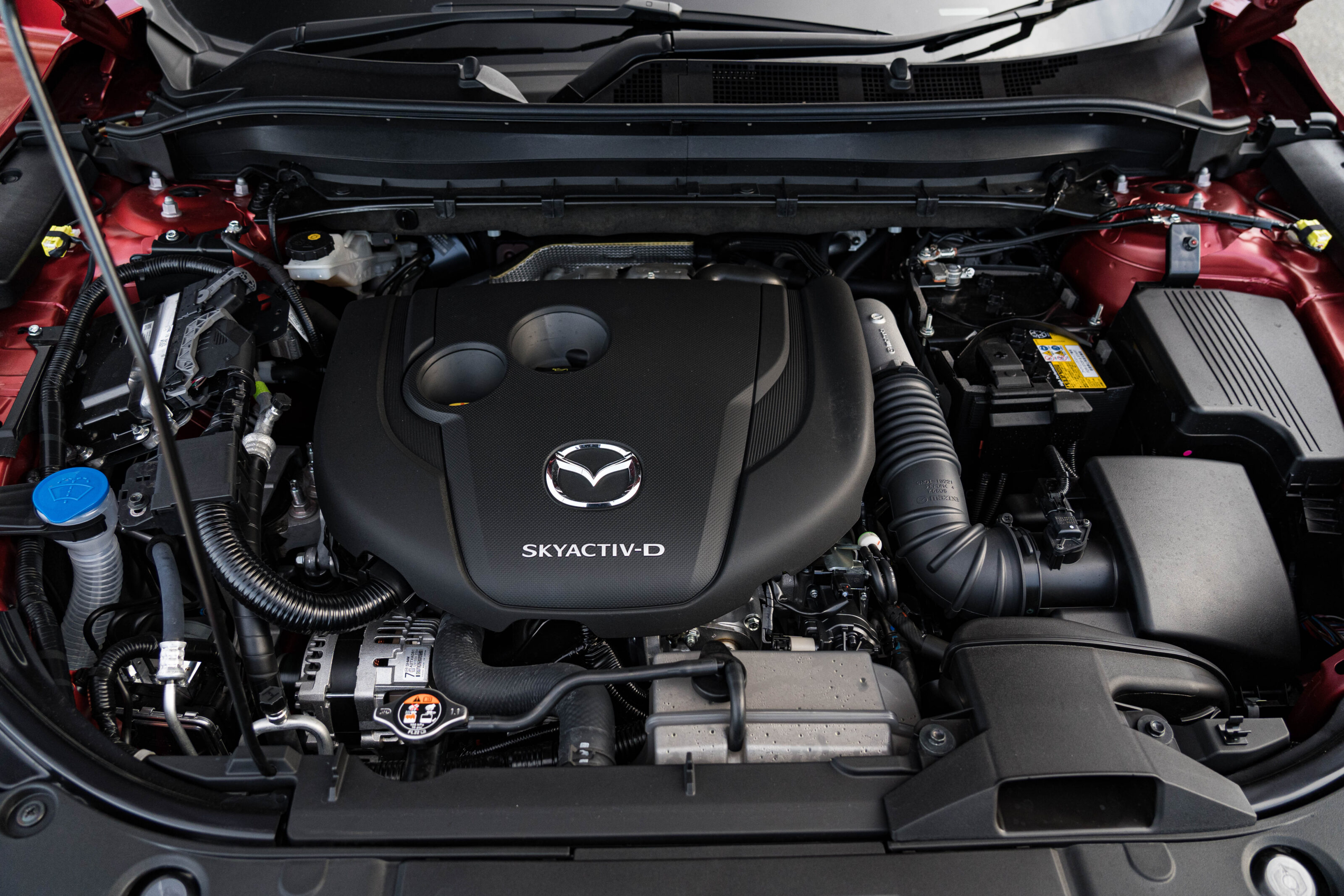
How safe is it?
The CX-8 scored five ANCAP stars in 2018.
| 22 Mazda CX-8 GT Diesel safety features | |
|---|---|
| 6 airbags | Lane-keep assist |
| Anti-lock brakes | Rear cross-traffic alert |
| Blind-spot monitoring | Reverse AEB |
| Driver fatigue monitoring | Speed sign recognition |
| Forward auto emergency braking | Stability control |
| Lane departure warning | Traction control |
The forward auto emergency braking works at speeds of up to 160km/h, which is handy. The kids are looked after with two sets of ISOFIX points in the middle row and five top tether anchors spread across the second and third rows.
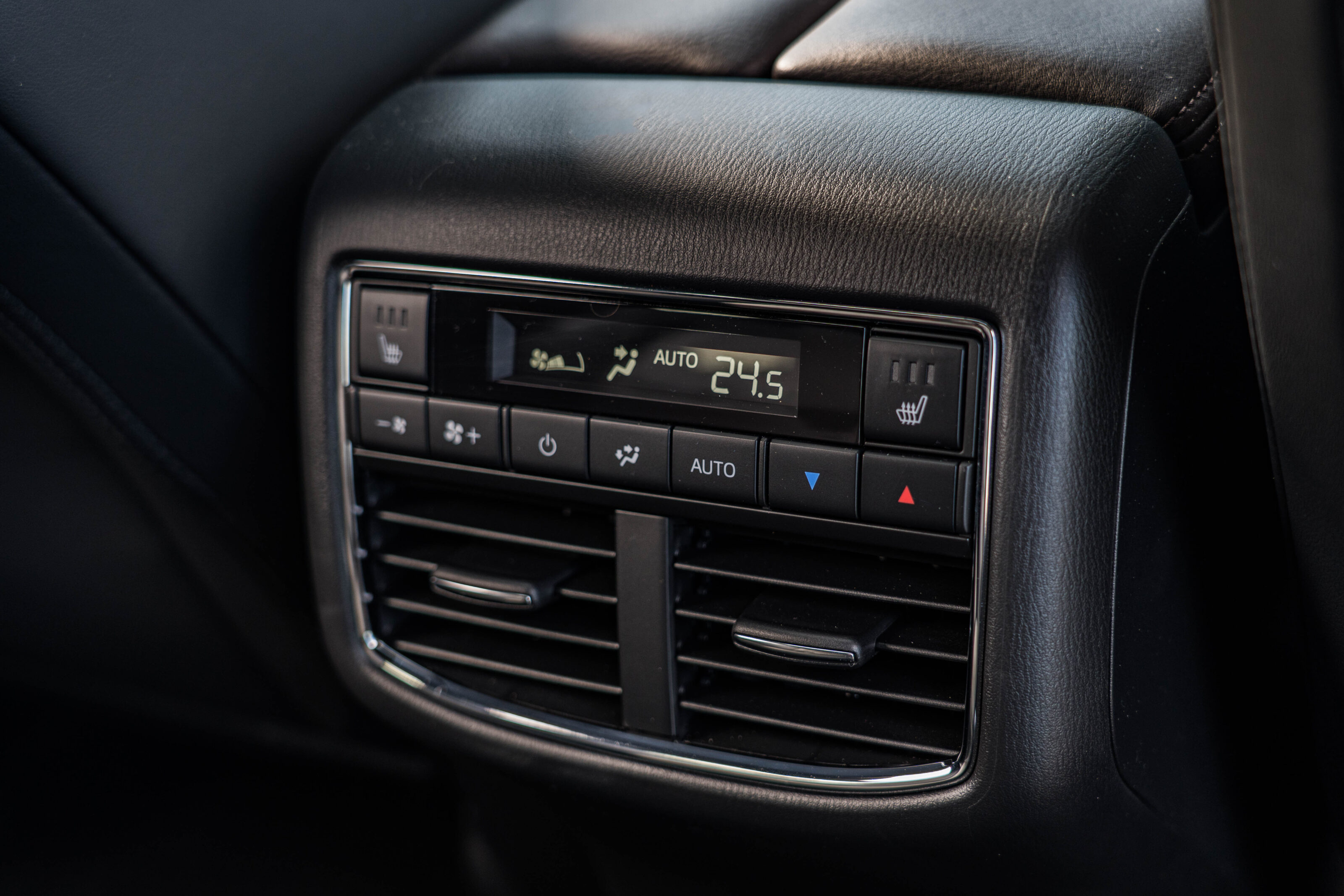
Warranty and running costs
Mazda offers a five-year, unlimited-kilometre warranty and roadside assist for the duration.
Servicing arrives every 12 months or 10,000km. That 10,000km is a bit stingy and diesel buyers are likely higher-than-average milers, so this has to be a consideration. Service prices are set by Mazda for the first five intervals, ranging between $357 (three services) or $433 (the remaining two) for a total of $1937 over five years, or $137 more than the 2.5-litre petrol.

VERDICT
The CX-8 is a seven-seater I stand behind because it works for people who don’t really need one. While it isn’t cheap in GT guise (I’d suggest stepping down to the Touring or the Touring SP to get better bang for buck), it’s well-equipped, looks great and is an excellent long-range tourer.
With the GT you just get a bit of extra luxury over the lower cars without the all-out bling and tech of the Asaki and the plush six-seat Asaki LE. At its core, the CX-8 is a very handy city-bound seven-seater, with a comfortable ride, competent chassis, stylish design and relaxing vibe.
Specifications
| 2022 Mazda CX-8 GT Diesel specifications | |
|---|---|
| Body | 5-door, 7-seat large SUV |
| Drive | all-wheel |
| Engine | 2.2-litre four-cylinder turbo-diesel |
| Transmission | 6-speed automatic |
| Power | 140kW @ 4500rpm |
| Torque | 450Nm @ 2000rpm |
| Bore stroke (mm) | 89×100 |
| Compression ratio | 14.4 : 1.0 |
| 0-100km/h | 9.6 sec (estimated) |
| Fuel consumption | 6.0L/100km (ADR combined) |
| Weight | 1978kg |
| Suspension | MacPherson strut front/multi-link rear |
| L/W/H | 4900mm/1840mm/1725mm |
| Wheelbase | 2940mm |
| Brakes | 320mm ventilated disc front / 325mm solid disc rear |
| Tyres | 225/55 R19 |
| Wheels | 19-inch alloy (space-saver spare) |
| Price | $63,890 + on-road costs |
Score breakdown
Things we like
- Good interior space for the footprint
- Lovely design inside and out
- Diesel punch
Not so much
- Heavy
- No hybrid version
- Not exactly cheap
We recommend
-
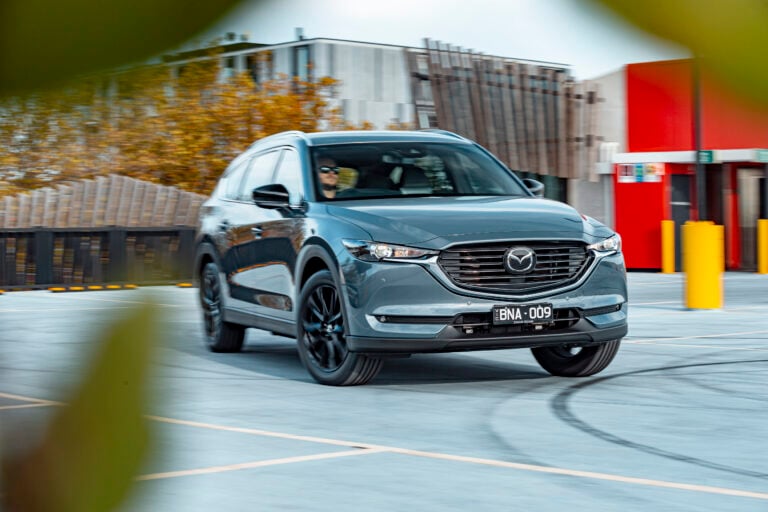 News
News2022 Mazda CX-8 price and features: Front-wheel-drive diesel dropped
Petrol popularity leads to dumped diesel
-
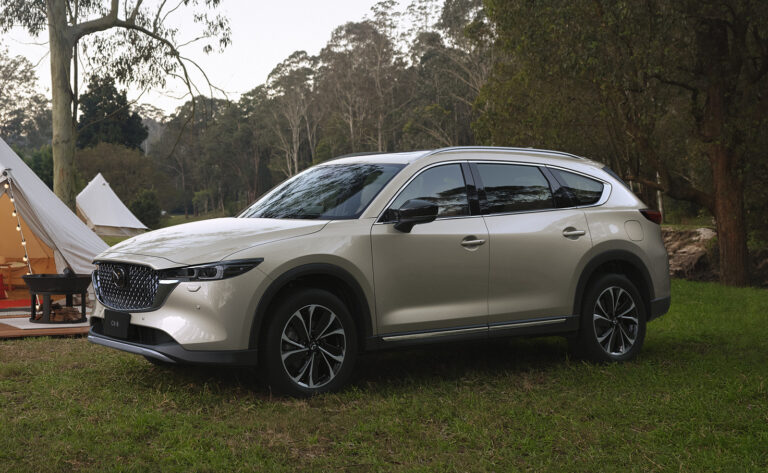 News
News2023 Mazda CX-8 facelift revealed ahead of Australian launch
Mazda’s three-row CX-8 large SUV has received a mid-life styling update
-
 News
NewsNew car calendar 2026: All the new cars coming to Australia next year
Here’s the WhichCar by Wheels guide to all the new cars that will launch in Australia in 2026. Check back in regularly for updates...






